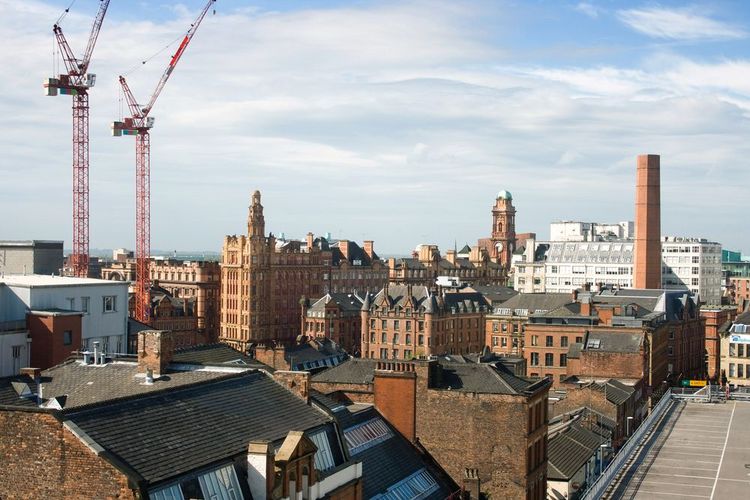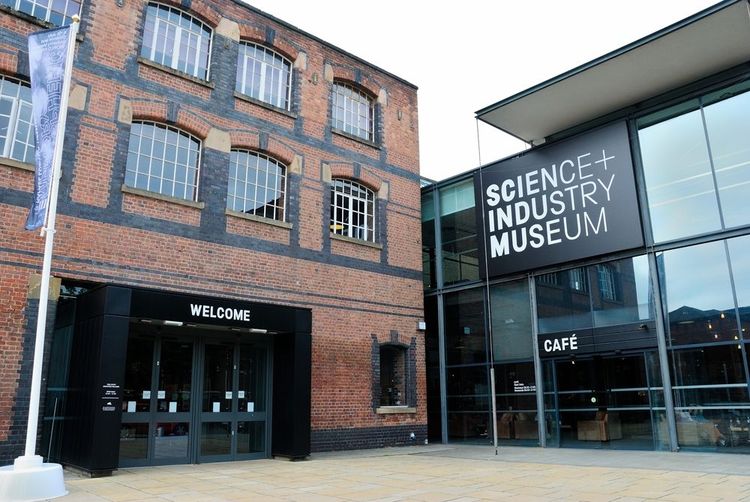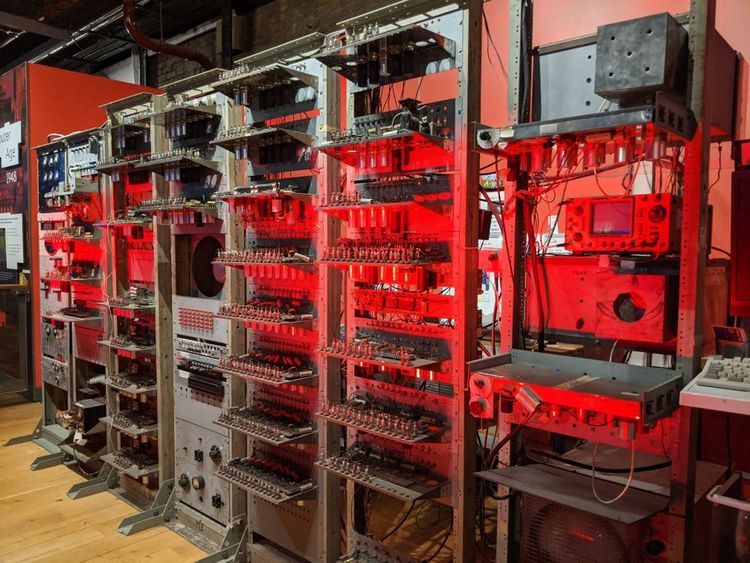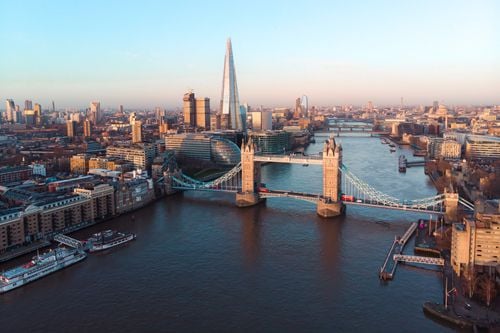Located on the site of the world’s oldest passenger railway station, the Science and Industry Museum opened in 1969 and contains collections recounting over 250 years of industrial and scientific achievement in Manchester. The museum’s impressive permanent collections contain an arsenal of showstopping relics that helped shape the modern world, from locomotive trains that transported goods across the British Empire to a replica of the “Manchester Baby”, the world’s first stored-programme computer that was built at the University of Manchester between 1946 and 1948. Meanwhile, its permanent exhibitions are a candid and insightful vivisection of the modern city: the Textiles Gallery considers Manchester’s 19th-century ‘Cottonopolis’ reputation when billions of tonnes of cotton grown by enslaved African people on American plantations poured into the city, while ‘Revolution Manchester’ is a journey through the city’s rich legacy of design and innovation, from the Manchester Baby to one of the world’s first Rolls-Royce motor cars to musical relics from Band on the Wall and Factory Records. ‘Experiment’ is another museum favourite, a family-friendly interactive space where children can engage their minds and the world around them.
Manchester was the world’s first industrial city. Founded as a Roman fort known as ‘Mamucium’ in AD 79, Manchester developed into an otherwise unassuming and inoffensive market town during the medieval period before becoming the hearth of the Industrial Revolution following the invention of the Spinning Jenny in 1764, the first fully mechanised production process in the Western world. Manchester was the ideal location to build mills to spin cotton on the Jennies, easily reached from major port towns like Liverpool and located along the nexus of several major rivers along which to construct early water-powered mills. The world’s first steam-powered textile mill was opened in Manchester in 1781, followed by the first public rail line to connect Manchester to Liverpool in 1830, and by 1871 the region was by far the most significant cotton spinning centre in the world, responsible for 32 per cent of global cotton production. As a result, Manchester gained the nickname ‘Cottonopolis’, the beating heart of British industry. Manchester today is a city indelibly shaped by both the wealth and the trauma this proverbial ‘birth by fire’ (or, by cotton) spurred everywhere from in its architecture and its streets to its culture and working man’s ethos, so if you’re passing through why not educate yourself on the one thing that, above all else, has made Manchester the great city it is today.

Manchester’s skyline, still dominated by traces of its industrial past.
- © creativeoneuk / ShutterstockManchester Science and Industry Museum

The entrance to the Science and Industry Museum in Manchester, UK.
- © Nina Alizada / Shutterstock
“Manchester Baby”, the world’s first stored-programme computer.
- © John B Hewitt / ShutterstockPractical information
Opening times: the Museum is open every day of the week from 10:00am to 5:00pm, except from 24-26 December and 1 January, when it is closed.
Admission fee: tickets are free and can be booked in advance here, however tickets will also be available on the door.
Getting there: the Science and Industry Museum is a twenty-minute walk from Piccadilly Gardens, the city’s main tram and bus terminus. It can also be reached on the free City Centre Bus via Route 1 (Opera House); the nearest tram stop is Deansgate-Castlefield, which is a ten-minute walk away. There are no parking facilities on-site. For further information, visit the website here.
Accessibility: the Science and Industry Museum is a very accessible space, with step-free access to all floors of its buildings. For more information, visit the website here.
The People’s History Museum

People’s History Museum, Manchester.
- © 4kclips / ShutterstockContaining over 60,000 objects in its collections - including 2,000 political posters, 300 political cartoons, 400 trade union and political banners, and 7,000 trade union badges - the People’s History Museum in Manchester is the UK’s national centre for working people’s history and tells in intimate and intricate detail the story of working people in Britain over the last two centuries. Highlights include revolutionary theorist Thomas Paine’s writing desk, a cane from the 1819 Peterloo Massacre, and a suffragette banner once owned by Emmeline Pankhurst. The museum also does work to draw and highlight intersections between working peoples’ struggles and anti-racism, womens’ rights, queer rights, disabled peoples’ awareness and rights, and immigrants’ rights, and environmental struggles throughout history, particularly in Manchester as an homage to the city’s singular track record of radical activism. Thus ephemera and relics from advocacy groups and movements such as Earth First!, Lesbiand and Gays Support the Miners, the National Federation of Old Age Pensions Associations, and both the Nicaragua and Chile Solidarity Campaigns are all archived and documented within the collection. The depth and diversity of its collections is unmatched not only in England but around the globe, allowing visitors to explore historical narratives often not written into conventional, big-H History. A visit is essential to understanding the proud community spirit and fire that has so long defined Manchester and much of England’s North, so be sure not to miss out!
Practical Information
Opening times: the People’s History Museum is open from 10am to 5pm every day of the week except Tuesdays, and except between 24 to 26 December and 1 January.
Admission fee: the Museum is free to enter, however donations are appreciated and encouraged. Booking in advance is encouraged to help manage capacity, but walk-ins are welcomed too.
Getting there: the People’s History Museum is located centrally in Manchester, along the River Irwell. The free City Centre Bus stops just outside the Museum along Route 1 at Gartside Street. The nearest bus stop is Bridge Street, a two-minute walk away. The nearest tram stop is at St. Peter’s Square, which is a ten-minute walk away. The museum has no on-site parking. For more information, visit the Museum website here.
Accessibility: the People’s History Museum is committed to supporting all visitors during their visit. There is lift access to all floors and hearing loops available in the galleries. For more information, visit the accessibility page here.
Quarry Bank Mill and Styal Estate

Quarry Bank Mill, Styal, Cheshire.
- © Alastair Wallace / ShutterstockLocated about half-an-hour out of Manchester, Quarry Bank Mill is a National Trust site that was at one point the largest textile mill in the country and was at the forefront of early Industrial Revolution-era innovation. It was opened in 1784 by Irish-born industrialist Samuel Greg and was relatively unique for its isolated, pastoral setting on the outskirts of the small village of Styal, allowing Greg, alongside his wife Hannah, to experiment with a ‘model village’ system whereby all employees, including children, lived in nearby workers’ cottages erected around the mill and received rudimentary healthcare and education courtesy of the couple.
Today, the Mill and surrounding estate are open to the public, documenting the history of the British cotton industry, trans-Atlantic cotton trade, and the lives of the people who lived and worked there. It has been described by the Council of Europe as “the most complete and least altered factory colony of the Industrial Revolution” and “of outstanding national and international importance”. The main museum is housed in the old mill building and contains machines that were used to spin and process cotton back in the eighteenth century, while the Styal Village functions partially as a living museum and is a snapshot into day-to-day life at the Mill. The surrounding estate, meanwhile, unfurls four-hundred acres along the banks of the River Boulin and is a patchwork of idyllic English countryside, rolling woodland, vibrant flower gardens, and babbling streams. It’s perfect for a rural escape from the city!

The Carrs park in Wilmslow, part of the pastoral idyll that surrounds Quarry Bank Mill.
- © ironbell / ShutterstockEditor's Tip
Wilmslow is a quiet but affluent town that borders onto Styal, easily accessible via a fifteen-minute train from Styal railway station to Wilmslow railway station. It is part of Cheshire’s ‘Golden Triangle’, notorious for the high density of Premier League footballers, from David Beckham to Wayne Rooney, who buy homes here for beautiful countryside views and a bit of quiet while retaining easy access to football-hub Manchester. Take an amble on the swanky high street for upmarket boutiques and chic charity stores, or go to the town’s main park, known as ‘The Carrs’, for breathtaking riverside greenery.
Book a bucolic retreat in rural Wilmslow!
 Manchester
Manchester
Rylands Farm Guest House
A charming guest house located in Wilmslow, greater Manchester area.Practical Information
Opening times: the mill is open every day from 10:30am to 5:00pm. However, consult the website before visiting to make sure.
Admission fee: adult tickets cost £20 and grant access to the Mill, Apprentice House, Quarry Bank House, upper and lower gardens, and cafe, as well as the entirety of the estate. Child tickets cost £10, and National Trust members enter for free.
Getting there: the easiest way to Quarry Bank Mill from Manchester is taking the train to Styal railway station which takes visitors directly to the estate. It is serviced hourly from Manchester Piccadilly and Manchester Airport. A free car-park is also provided on site. The journey takes approximately 30 minutes by road.
Accessibility: the National Trust strives to make Quarry Bank Mill as accessible a site as possible, despite challenges the historic building and landscape may present. A comprehensive accessibility guide is available on their website.






